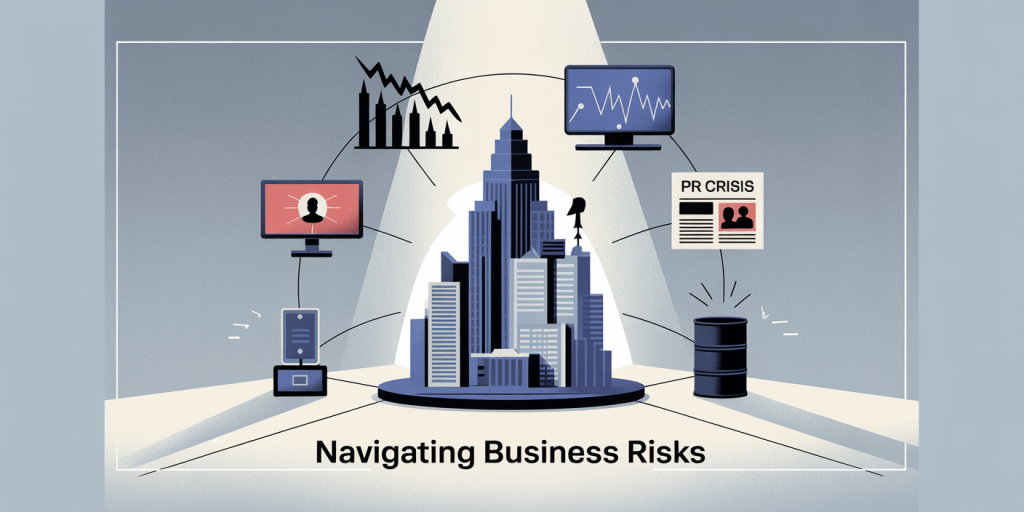In today’s fast-paced financial and business environments, comprehending the balance between risk and reward is essential for success. Whether investing in stocks, launching a startup, or making strategic decisions, understanding this fundamental concept can help individuals and organizations optimize outcomes while safeguarding against potential losses. Risk versus reward forms the backbone of decision-making models across industries, influencing everything from portfolio management to career moves.

Grasping the complexities behind risk and reward requires analyzing both quantitative data and qualitative factors. By breaking down their relationship, exploring real-world examples, and examining frameworks for evaluation, readers can develop a richer appreciation of these dynamics and how they apply practically. This article delves deeply into the nature of risk and reward, highlights key comparisons, and offers insights into navigating their interplay in current and future scenarios.
Defining Risk and Reward: Core Concepts
Risk and reward are interdependent concepts within finance, economics, and decision science. At a basic level, risk refers to the possibility of loss or undesirable outcomes, while reward signifies the potential gains or benefits achieved from a decision or investment.
Risk manifests in various forms — market volatility, credit default, operational failures, or even reputational harm. Conversely, reward often entails financial returns, competitive advantage, or personal satisfaction. A crucial point is that higher potential rewards generally involve taking on greater risk, although this is not always a straightforward correlation.
To exemplify, consider stock investments. Higher-risk stocks such as emerging tech companies might offer spectacular returns but come with greater volatility and uncertainty. On the other hand, government bonds typically present lower risk and moderate returns. The trade-off between risk and reward forms the underlying calculus investors perform daily.
Academic literature illustrates this relationship quantitatively through models such as the Capital Asset Pricing Model (CAPM), which links expected return to risk, gauged by beta (a measure of sensitivity to market moves). Historical data supports this: over the last 90 years, U.S. stocks have earned an average annual return of approximately 10%, albeit with volatility around 15%. Meanwhile, Treasury bonds yielded about 5-6% with less than half the volatility (Damodaran, 2023).

Evaluating Risk: Measurement and Types
Quantifying risk is a critical step for sound decision-making. One widely used metric is standard deviation or volatility, which measures the degree to which returns fluctuate around the mean. Higher volatility indicates greater uncertainty in outcomes. Another important measure is Value at Risk (VaR), used by financial institutions to estimate the maximum expected loss over a set period with a specific confidence level.
Risk also spans multiple types beyond financial loss. These include: Market Risk: Exposure to changes in market prices Credit Risk: Probability of counterparty default Operational Risk: Failures in internal processes or systems Liquidity Risk: Potential inability to convert assets into cash quickly Reputational Risk: Damage to brand or public perception
An example of operational risk leading to financial loss is the 2012 Knight Capital Group incident where a trading software glitch resulted in a $440 million loss in 45 minutes (SEC, 2013). This event underscores how non-market risks can have enormous impacts despite not being traditionally quantified in market risk models.
A comparative table illustrating typical risk metrics is below:
| Risk Type | Measurement Tools | Example Scenario |
|---|---|---|
| Market Risk | Beta, standard deviation | Stock price fluctuations |
| Credit Risk | Credit ratings, default rates | Bond issuer bankruptcy |
| Operational Risk | Incident frequency, loss data | System outage causing losses |
| Liquidity Risk | Bid-ask spreads, turnover | Inability to sell assets quickly |
| Reputational Risk | Surveys, media analysis | PR crisis damaging sales |
Understanding these distinctions helps tailor strategies to manage specific risk types effectively.
Balancing Risk and Reward: Practical Approaches
Striking an optimal risk-reward balance is a nuanced process, often informed by an individual’s or organization’s risk tolerance, time horizons, and objectives. For instance, younger investors might accept high risk for potential growth, while retirees typically prefer capital preservation.
One popular method to assess trade-offs is the risk-adjusted return, which scales returns by the level of risk taken. Metrics such as Sharpe Ratio (return minus risk-free rate divided by volatility) help compare investment performance on this basis. A higher Sharpe Ratio indicates better compensation for risk.
Practical strategies include diversification, which spreads exposure across assets to mitigate unsystematic risk. Warren Buffett famously advises not to “put all your eggs in one basket,” reinforcing the principle that risk reduction can be achieved through allocation.
An insightful real case is the 2008 financial crisis. Many investors chasing high rewards concentrated portfolios in mortgage-backed securities, underestimating the systemic and credit risks involved. The ensuing losses highlighted the perils of neglecting risk assessment for perceived short-term gains.
Consider this table comparing investment options by risk and reward (approximate annual figures):
| Investment Type | Average Return | Volatility (%) | Risk Level |
|---|---|---|---|
| U.S. Large Cap Stocks | 10% | 15 | Moderate-High |
| High-yield Corporate Bonds | 7-8% | 8-12 | Moderate |
| Treasury Bonds (10-year) | 4-5% | 3-5 | Low |
| Money Market Accounts | 1-2% | ~0 | Very Low |
Such comparative data guide investors to align choices with risk appetite.
Psychological Factors Influencing Risk vs Reward Perception
Understanding risk and reward extends beyond calculations to the psychological biases that shape human decision-making. Behavioral economics demonstrates that individuals often deviate from purely rational assessments.
One well-documented bias is loss aversion, where losses loom larger than gains psychologically, leading to overly cautious behavior or irrational selling in downturns. Conversely, overconfidence can cause underestimation of risks.
Real cryptocurrency markets offer vivid examples. During the 2017 Bitcoin surge, many investors exhibited herd behavior, driven by FOMO (fear of missing out), ignoring the significant volatility and risk. As a result, the market experienced a sharp correction in 2018, with Bitcoin losing nearly 80% of its peak value (CoinDesk, 2018).
Financial advisors increasingly emphasize balancing emotional with analytical perspectives to avoid pitfalls. Tools like risk profiling questionnaires and scenario simulations assist in aligning investor psychology with objective risk tolerances.
Applying Risk vs Reward to Business Decision-Making
Beyond investments, businesses constantly encounter risk-reward trade-offs in their operational and strategic choices. For example, entering a new market might offer substantial revenue growth (reward) but expose the firm to unfamiliar regulatory and competitive risks.
Consider Tesla’s aggressive push into electric vehicles (EVs). The reward of market leadership and sustainable growth outweighed risks related to production delays, regulatory hurdles, and high capital expenditure. Today, Tesla commands a significant market share within the EV industry, validating this risk-taking approach (Statista, 2024).
Risk management frameworks like Enterprise Risk Management (ERM) enable businesses to identify, assess, and respond to risks systematically. Incorporating risk culture across organizations promotes informed decision-making.
In contrast, companies with overly risk-averse cultures might miss innovation opportunities, whereas those too risk-tolerant may jeopardize stability. Successful firms find a tailored equilibrium, constantly evaluating risk impacts versus potential rewards.
| Business Scenario | Potential Reward | Associated Risk | Mitigation Strategy |
|---|---|---|---|
| New product launch | Market growth, increased revenue | Product failure, market rejection | Prototype testing, customer feedback |
| Geographic expansion | Access to new customers, economies of scale | Regulatory compliance, cultural challenges | Local partnerships, legal review |
| Mergers and acquisitions | Synergies, market consolidation | Integration issues, overvaluation | Due diligence, integration planning |
These business cases highlight the necessity of strategic risk-reward evaluation in driving growth.

Future Perspectives on Risk vs Reward
Looking ahead, risk vs reward dynamics will continue evolving amid technological advances, geopolitical shifts, and environmental changes. Increasing digitization, for example, introduces cyber risks but also unlocks innovative business models and efficiencies.
Artificial intelligence (AI) presents both immense opportunities and novel risks like algorithmic bias or automation-related job losses. Investors and organizations must adapt risk assessment tools to incorporate such emerging factors.
Climate change is another domain reshaping risk perceptions. As governments enforce stricter sustainability regulations, businesses that delay embracing green technologies risk obsolescence, while early adopters may reap competitive rewards.
Financial markets are also witnessing the rise of alternative assets such as cryptocurrencies and non-fungible tokens (NFTs), characterized by very high volatility but potentially outsized rewards. Regulatory developments and market maturation will influence how these fit into traditional risk-reward frameworks.
Efforts to enhance transparency and data-driven decision-making will further refine risk management practices. Predictive analytics and big data enable more granular risk identification and reward forecasting.
In conclusion, mastering risk vs reward remains a dynamic challenge requiring continuous learning and adaptability. Those who develop robust evaluative frameworks, balanced psychological approaches, and forward-looking strategies will position themselves advantageously in tomorrow’s complex landscape. Understanding these principles empowers smarter decisions, mitigates pitfalls, and ultimately drives sustainable success across personal, financial, and business domains.